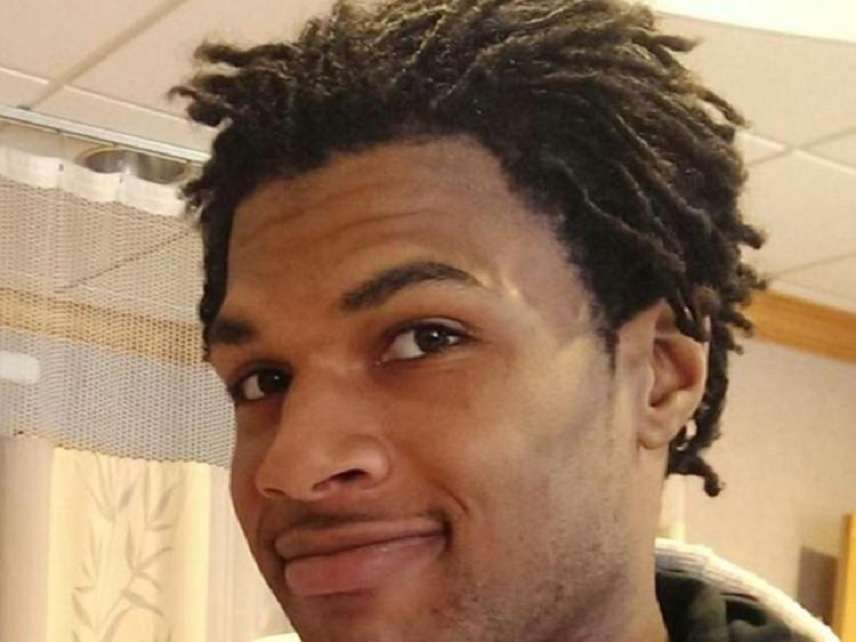DOJ Declines to Press Charges Against Cop Who Shot and Killed Man at Walmart
Nearly three years after a grand jury declined to indict

The Civil Rights Division of the Justice Department and the U.S. Attorney's Office for the Southern District of Ohio have announced that they won't be pressing federal charges against Officer Sean Williams. Williams shot and killed John Crawford III at an Ohio Walmart in August 2014.
The case illustrates the importance of reducing employment privileges that keep bad police officers on the job, and of encouraging disciplinary protocols that can identify problem cops before they kill. Williams led his department in the use of force—in eight years at the Beavercreek Police Department, he used force at 10 times the department's average rate.
The story began when a customer saw Crawford holding a pellet rifle he had picked up from a shelf while talking on his cellphone. The customer called 911, and Williams responded. Surveillance video released after a grand jury declined to indict Williams shows the officer firing at Crawford moments after arriving on the scene. Police claimed they ordered Crawford to drop his weapon but, as Reason's Robby Soave reported at the time, "the video footage proves definitively that that was not the case—the cops shot the man almost immediately after encountering him."
The grand jury made its decision not to indict Williams in September 2014. The Department of Justice (DOJ) then announced it would open its own investigation.
Nearly three years later, the DOJ has decided it cannot press charges against Crawford because "the government would be required both to disprove his stated reason for the shooting—that he was in fear of death or serious bodily injury—and to affirmatively establish that…Williams instead acted with the specific intent to violate…Crawford's rights."
The DOJ press release says its prosecutors did not have the evidence to accomplish that.
"This is one of the highest standards of intent imposed by law," the release reads. "Mistake, misperception, negligence, necessity, or poor judgment are not sufficient to establish a federal criminal civil rights violation."
The DOJ insists it completed a thorough investigation before arriving at its decision.
"The investigation was conducted by career investigators and prosecutors, and included a review of voluminous materials, including the investigative reports generated by the Beavercreek Police Department and the Ohio Bureau of Criminal Investigation; forensic evidence reports; the autopsy report; photographs of the crime scene; toxicology reports; and EMS reports," the release says. "Prosecutors also obtained assistance from an independent crime scene reconstruction expert to aid in understanding the exact perspectives held by the officers who confronted…Crawford. In addition, the FBI conducted its own interviews of relevant witnesses, including interviews with personnel at the Beavercreek Police Department who were responsible for training [Williams]."
Williams went on desk duty after the shooting, but is expected to return to the streets now that the federal investigation has concluded.
The city of Beavercreek has already spent more than $400,000 on the legal defense for Williams and Sgt. David Darkow, who was also present during the incident but did not fire at Williams. The figure does not include the cost of the police union lawyer. The city has subsequently joined the Professional Law Enforcement Association, described by the Dayton Daily News as "like an insurance company for [police] legal defense."
A lawsuit by the family over the shooting is still pending.